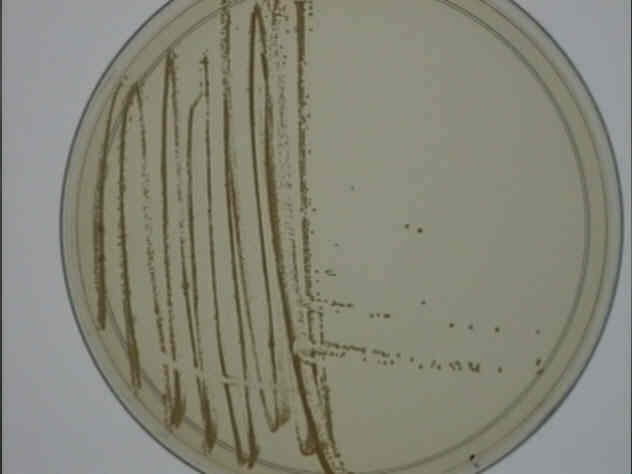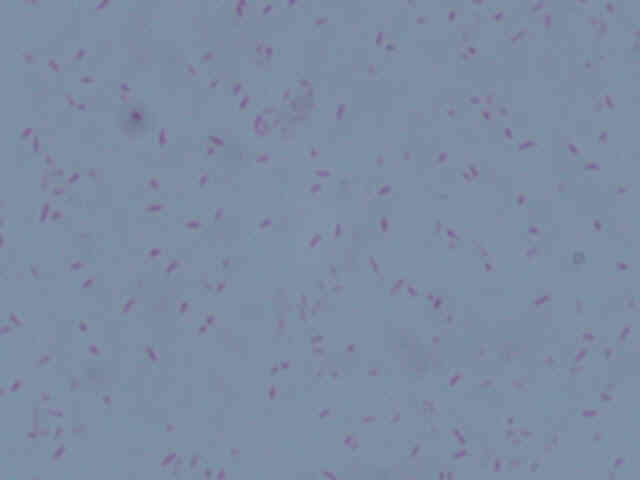Results
The first phase of this project was
not successful. The group has concluded that these efforts were not
successful due to numerous factors. Foremost, it is believed that
the vacuum sealing of the salted herring prevented any bacteria from surviving
on the sample. The elevated temperature of the incubation was probably
also to blame as well as the dehydration of the media and crystalization
of its salts.
The second phase of experimentation
was more fruitful. The goal of the project was to isolate a salt
tolerant organism from a marine environment. The group was successful
because bacterial growth was observed on the plates and tests were consistent
with the data given in Bergey's Manual. Here are the results
of the tests that were performed:
|
Test
|
Observations and Test Results
|
|
Gram Stain
|
Pink bacillus; Gram negative
|
|
Oxidase Test
|
Blue; produces oxidase enzyme, oxygen tolerant
|
|
Catalase Test
|
Bubbles; produces catalase enzyme, oxygen tolerant
|
|
MacConkey's Plate
|
No Growth; inconclusive
|
|
T-soy Plate
|
Dull orange colonies; same as seawater plates
|
|
Motility Stab
|
Motile
|
|
O/F Test without Oil
|
Yellow; may be capable of oxidation
|
|
O/F Test with Oil
|
Yellow; capable of fermentation, may be facultative anaerobe
|
This is a picture of the bacteria growing on a T-soy plate.
Although the bright background makes the colonies appear dark, they are
actually a light orange.

This is a picture of a Gram stain from the above plate.
Although the picture is slightly blurred, the bacteria are clearly pink
rods (Gram negative).

This organism was identified through
several tests performed by the group. The bacteria was able to grow
in a salt water media as well as an environment where salt was absent (T-soy
plates). This indicates that the organism is salt tolerant.
Very few microbes are able to grow in high salt concentrations (such as
3% in the seawater medium), therefore the organism is more easily selected
for and consequently identified. The organism is Gram negative with
rod-shaped cell morphology. The color of the colonies on the T-soy
plates (dull orange) also proved helpful during identification. The
metabolism of the organism was also used to identify it. The bacteria
is capable of fermentation and can also tolerate the presence of oxygen,
therefore the organism may be a facultative anaerobe. It is motile
in some stages of development which is another characteristic that enabled
the group to successfully identify it.
This data has lead the group to believe
that the bacteria is a member of the genus Vibrio and may be the
species V. fischeri.
-
<=
Methods Home
Discussion =>
-
